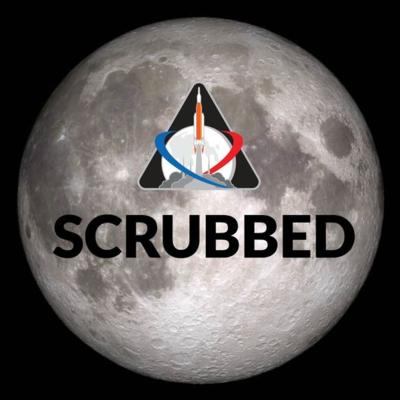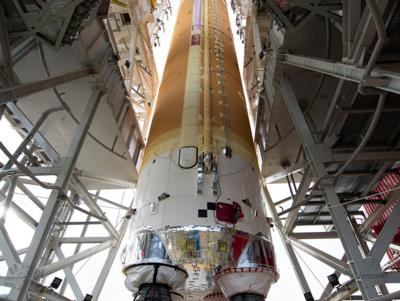Sun, Sep 04, 2022
NASA to 'Stand Down' on Artemis I Launch Attempts in Early September
After standing down on today’s Artemis I launch attempt when engineers could not overcome a hydrogen leak in a quick disconnect, an interface between the liquid hydrogen fuel feed line and the Space Launch System (SLS) rocket, mission managers met and decided they will forego additional launch attempts in early September.

Over the next several days, teams will establish access to the area of the leak at Launch Pad 39B, and in parallel conduct a schedule assessment to provide additional data that will inform a decision on whether to perform work to replace a seal either at the pad, where it can be tested under cryogenic conditions, or inside the Vehicle Assembly Building.
To meet the requirement by the Eastern Range for the certification on the flight termination system, currently set at 25 days, NASA will need to roll the rocket and spacecraft back to the VAB before the next launch attempt to reset the system’s batteries. The flight termination system is required on all rockets to protect public safety.
During today’s launch attempt, engineers saw a leak in a cavity between the ground side and rocket side plates surrounding an 8-inch line used to fill and drain liquid hydrogen from the SLS rocket. Three attempts at reseating the seal were unsuccessful. While in an early phase of hydrogen loading operations called chilldown, when launch controllers cool down the lines and propulsion system prior to flowing super cold liquid hydrogen into the rocket’s tank at minus 423 degrees F, an inadvertent command was sent that temporarily raised the pressure in the system. While the rocket remained safe and it is too early to tell whether the bump in pressurization contributed to the cause of the leaky seal, engineers are examining the issue.

Because of the complex orbital mechanics involved in launching to the Moon, NASA would have had to launch Artemis I by Tuesday, Sept. 6 as part of the current launch period. The launch day must account for the Moon's position in its lunar cycle so that the SLS rocket’s upper stage can time the trans-lunar injection burn with enough performance to successfully intercept the "on ramp" for the lunar distant retrograde orbit. The more powerful Exploration Upper Stage on future configurations of the rocket will enable daily, or near-daily, launch opportunities to the Moon, depending on the orbit desired.
Additional Artemis Launch Windows:
September 19 – October 4
- 14 launch opportunities
- No launch availability on Sept. 29 and Sept. 30
October 17 – October 31
- 11 launch opportunities
- No launch availability on October 24, 25, 26, and 28
November 12 – November 27 (preliminary)
- 12 launch opportunities
- No launch availability on November 20, 21, and 26
December 9 – December 23 (preliminary)
- 11 launch opportunities
- No launch availability on December 10, 14, 18, and 23
More News
Also: Vertical Flight Society, NBAA Maintenance Conference, GA Honored, AMT Scholarship For the first time, students from Embry-Riddle’s Daytona Beach, Florida, campus took t>[...]
Hazardous Weather Information Summary of significant meteorological information (SIGMET/WS), convective significant meteorological information (convective SIGMET/WST), urgent pilot>[...]
"The need for innovation at speed and scale is greater than ever. The X-62A VISTA is a crucial platform in our efforts to develop, test and integrate AI, as well as to establish AI>[...]
(FAA) Inspector Observed That Both Fuel Tanks Were Intact And That Only A Minimal Amount Of Fuel Remained In Each Analysis: According to the pilot, approximately 8 miles from the d>[...]
“Pyka’s Pelican Cargo is unlike any other UAS solution on the market for contested logistics. We assessed a number of leading capabilities and concluded that the Pelica>[...]
 Airborne-Flight Training 05.09.24: ERAU at AIAA, LIFT Diamond Buy, Epic A&P
Airborne-Flight Training 05.09.24: ERAU at AIAA, LIFT Diamond Buy, Epic A&P ANN's Daily Aero-Term (05.07.24): Hazardous Weather Information
ANN's Daily Aero-Term (05.07.24): Hazardous Weather Information Aero-News: Quote of the Day (05.07.24)
Aero-News: Quote of the Day (05.07.24) NTSB Final Report: Cessna 150
NTSB Final Report: Cessna 150 Aero-News: Quote of the Day (05.08.24)
Aero-News: Quote of the Day (05.08.24)




